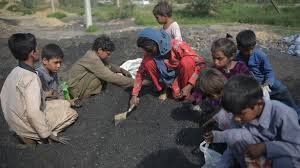The United Nations Global Emergency Fund for Children, UNICEF, has said that by 2050, the population of children in Pakistan will reach 12.9 million, while India and China may reach 35 million and 14 million respectively.
According to the report released by UNICEF on the state of the world’s children in 2024, the population of children in Nigeria will be 132 million. The report warns that if urgent measures are not taken to protect the rights of children in a changing world, The future of childhood will be in danger.
The report describes how three main global forces or major trends will affect children’s lives by 2050 and beyond: demographic change, climate change, environmental crisis, and changing technologies, and the challenges children will face in the future. And provide key factors for opportunities.
UNICEF Executive Director Catherine Russell says children are facing a myriad of crises, from climate shocks to online threats, and will only increase in the coming years.
According to the report, the climate crisis has already become serious, with 2023 being the hottest year on record. 8 times more children will experience severe heat waves, 3 times more children will experience severe floods, and almost twice as many children will experience severe forest fires.
The extent to which these climate risks affect children will depend on their age, health, socio-economic setting, and access to resources, for example climate-friendly shelter, and cooling infrastructure. A child with access to health care, education, and clean water will be more likely to survive climate shocks than children without access to these facilities.
The report emphasizes the urgent need for targeted environmental measures to protect all children and reduce the risks they face. According to the World Bank, the young children born here have achieved only 47% of their development potential, so much needs to be done.
Meanwhile, the report acknowledges that frontier technologies such as artificial intelligence (AI) offer both promise and fear to children, who are already using artificial intelligence-enabled applications, toys, virtual assistants, games, and learning software. But the digital divide is clear.
According to the report, children’s access to education is also likely to increase over the past 100 years. It is expected that in the 2050s, around 96 percent of children globally will be receiving at least primary education, while in the 2000s it will The rate was 80 percent, the report suggests. Similarly, increased investment in education and public health and stricter environmental protection can have a positive impact on children.





















